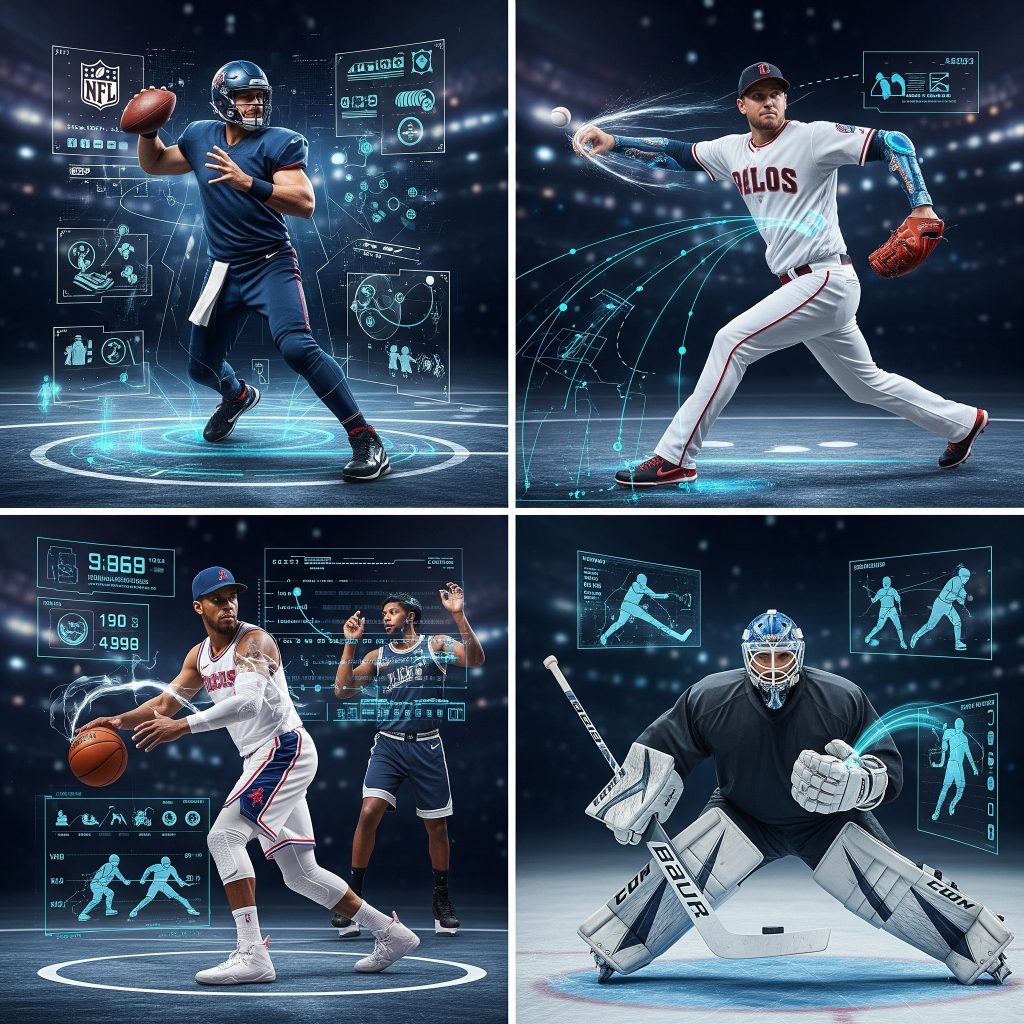The landscape of professional sports in North America – encompassing the NFL, MLB, NBA, and NHL – is in a constant state of flux, driven not just by athletic prowess but by the relentless evolution of strategy and the integration of cutting-edge technology. From advanced analytics shaping player performance to innovative broadcasting techniques revolutionizing the fan experience, these leagues are at the forefront of combining human endeavor with scientific advancement. This dynamic interplay has reshaped how games are played, coached, and consumed, pushing the boundaries of athletic achievement and fan engagement.
NFL: The Data-Driven Gridiron
Football, once primarily a game of brute strength and instinct, has been profoundly transformed by analytics. Every aspect of the NFL is now dissected with granular precision. Coaching staffs employ sophisticated algorithms to determine optimal play calls, analyze opponent tendencies, and even decide when to go for it on fourth down instead of punting. Next Gen Stats provides real-time tracking of every player’s speed, acceleration, and movement, offering unprecedented insights into individual performance and strategic effectiveness. Quarterbacks wear helmets with in-built communication systems, and tablets on the sidelines allow coaches to review plays instantly.
Beyond the field, technology has enhanced player safety. Advanced helmet designs, impact sensors, and rigorous concussion protocols are a direct result of scientific research aimed at mitigating the inherent risks of the sport. The scouting process, too, relies heavily on data, identifying talent not just through traditional observation but through statistical models that predict future success. This data-driven approach has led to more efficient player development, smarter roster construction, and a more nuanced understanding of game flow, making the NFL a complex chess match played at breakneck speed.
MLB: The Analytical Revolution at the Ballpark
Baseball, with its discrete events (pitch, swing, hit), is a natural fit for statistical analysis, and MLB has embraced this more than any other sport. The “Moneyball” era merely scratched the surface; today, teams employ entire departments of data scientists. Statcast, MLB’s state-of-the-art data collection system, measures everything from pitch velocity and spin rate to exit velocity and launch angle of batted balls, providing an unparalleled level of detail. This information dictates pitching strategies, hitting approaches, and defensive shifts. Outfielders position themselves based on predictive models of where a particular batter is likely to hit the ball.
The use of technology extends to player development. High-speed cameras and motion capture systems analyze biomechanics, helping pitchers refine their delivery or hitters optimize their swing path. Wearable technology monitors player fatigue and injury risk, informing rest schedules and training regimens. Even the fan experience is enhanced, with augmented reality apps allowing fans to see real-time stats overlaid on the field. This analytical revolution has made baseball a more intellectually engaging sport, where the battle of wits between front offices and the optimization of every minute detail often determine success.
NBA: The Metrics of Modern Basketball
The NBA has been quick to adopt advanced metrics, using them to redefine what constitutes a good shot or an efficient offensive scheme. The rise of the “three-point revolution” is a direct consequence of analytics demonstrating the superior value of deep shots over long two-pointers. Teams now meticulously track plus-minus ratings, usage rates, and true shooting percentages to evaluate player impact beyond traditional box scores. Defensive schemes are tailored not just to individual opponents but to their statistical tendencies from different areas of the court.
Player tracking technology, similar to the NFL’s, provides granular data on movement, spacing, and passing efficiency. This allows coaches to identify optimal offensive sets and defensive rotations. The league has also embraced load management, using data to monitor player fatigue and prevent injuries, thereby extending the careers of its aging stars. Beyond the court, social media and digital platforms are integral to the NBA’s global brand, fostering direct connections between players and fans, and showcasing highlights almost instantaneously. The league’s embrace of technology has made it a dynamic, aesthetically pleasing, and highly efficient product.
NHL: Blending Grit with Precision
Hockey, known for its speed and physicality, is increasingly integrating data and technology into its strategic approach. NHL teams now use advanced analytics to evaluate player performance, identify inefficiencies in defensive schemes, and optimize power play and penalty kill formations. Metrics like Corsi (shot attempt differential) and Fenwick (unblocked shot attempt differential) provide a deeper understanding of puck possession and offensive pressure than traditional goals and assists.
Tracking puck and player movement is becoming more sophisticated, allowing coaches to analyze intricate passing patterns, zone entries, and defensive breakdowns with unprecedented detail. Goaltenders, in particular, benefit from technology that helps them refine their positioning and anticipate shots. Biometric tracking helps monitor player exertion during grueling games and practices, guiding recovery and conditioning. The goal is to maximize efficiency on the ice, blending the raw grit and skill that define hockey with a scientific approach to strategy and player management. The NHL continues to innovate with in-game tracking data for broadcasts, providing fans with more contextual information than ever before.

